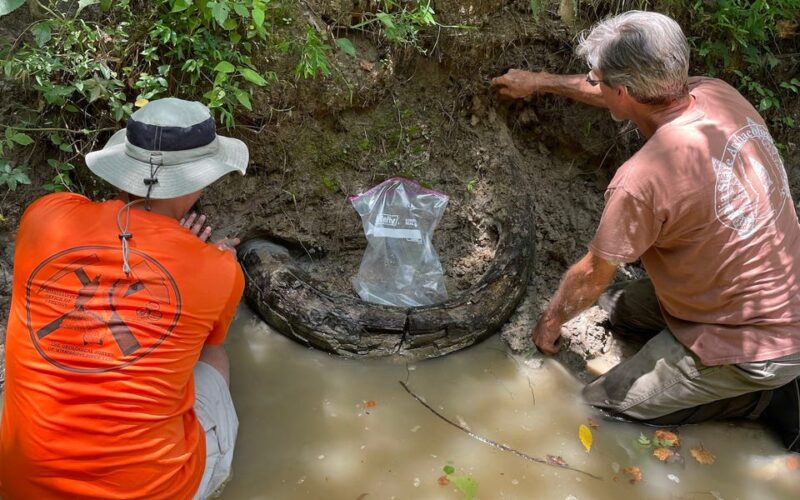Experts can learn a lot from the tusk.
Mississippi Department of Environmental Quality
Templeton’s discovery is exciting for a couple of reasons.
First, it’s rare — “we don’t really have a whole lot of these animals represented in our fossil record,” Starnes said. And second, it’s nearly complete, including the tusk’s tip.
The fact that it was a tusk is also great news for experts because tusks contain a lot more information about a mammoth than, say, a leg bone.
“We can tell about this whole animal’s life by studying the tusk,” Starnes said.
Mammoths accumulated layers to their tusks each year similar to tree rings, preserving a record of where they were and whether there was enough to eat.
While the tusk’s examination is still in its early days, previous research on other mammoth tusks shows just how much Starnes and his colleagues can learn.
Earlier this year, scientists published a paper tracing a 14,000-year-old woolly mammoth’s movements through Canada and Alaska based on an analysis of just her tusk.
The tusk will hopefully be ready to show at the Mississippi Museum of Natural Science’s fossil roadshow in March, Starnes said. Though, it’ll need some repair beforehand since it cracked during transport.
Source link
lol

